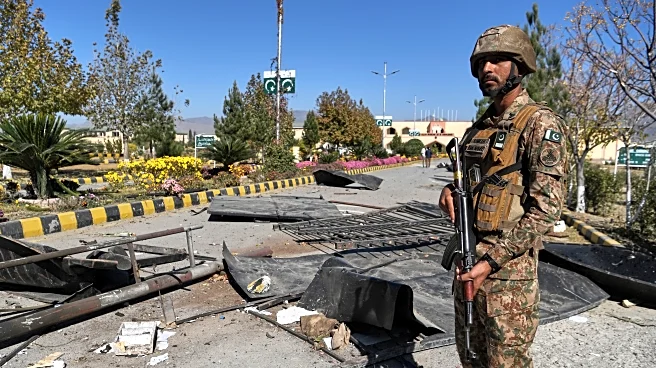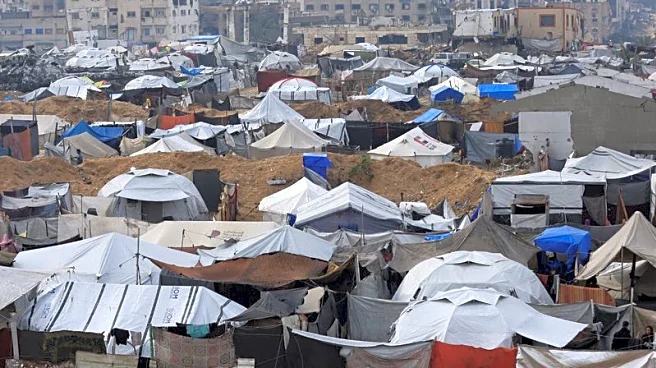What's Happening?
Hamad International Airport has reported a significant increase in passenger traffic, serving 52.7 million passengers in 2024. This growth has continued into 2025, with the third quarter marking the busiest
period in the airport's history. The airport plays a crucial role in enhancing Qatar's appeal as a tourist destination, with approximately five million tourists visiting the country in 2024. Hamad International Airport is strategically positioned to convert its substantial transfer passenger base into visitors, acting as a gateway to Qatar's rich cultural offerings and major international sporting events, including Formula 1 and the FIFA Arab Cup 2025.
Why It's Important?
The expansion of Hamad International Airport is significant for Qatar's tourism industry, which is a vital component of the country's economic diversification strategy. By increasing its capacity to handle more passengers, the airport supports Qatar's efforts to attract international tourists and boost its global profile. This growth in tourism can lead to increased revenue for local businesses and create job opportunities in the hospitality and service sectors. Additionally, hosting major events like Formula 1 and the FIFA Arab Cup further solidifies Qatar's reputation as a premier destination for international sports and cultural events.
What's Next?
As Qatar continues to invest in its tourism infrastructure, Hamad International Airport is expected to further enhance its facilities and services to accommodate the growing number of visitors. This may include expanding terminal spaces, improving passenger amenities, and increasing flight connectivity. The airport's development will likely attract more airlines and increase flight options, making Qatar more accessible to international travelers. Stakeholders, including government officials and tourism industry leaders, will likely focus on promoting Qatar's cultural and sporting events to sustain the momentum in tourism growth.
Beyond the Headlines
The growth of Hamad International Airport and Qatar's tourism sector may have broader implications for regional travel dynamics. As Qatar positions itself as a key transit hub, neighboring countries might experience shifts in travel patterns, potentially leading to increased competition among regional airports. Additionally, the emphasis on cultural and sporting events highlights Qatar's strategic use of soft power to enhance its international standing and foster cross-cultural exchanges.













